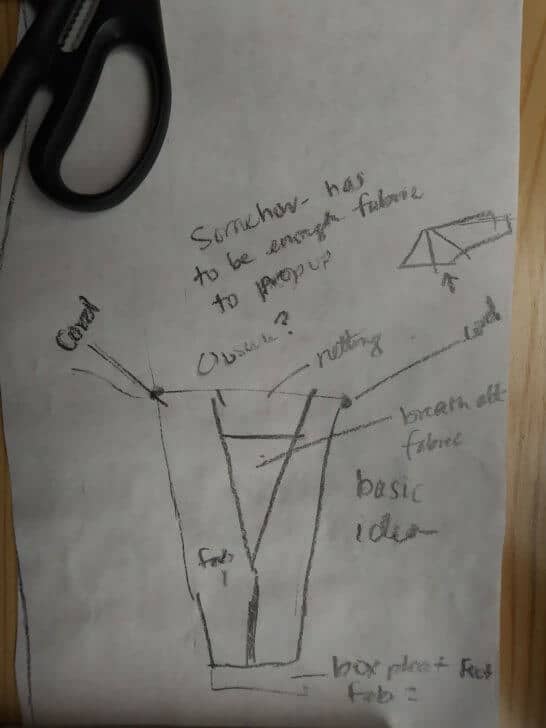Introduction
In preparation for an August 2018 attempt to fastpack (run/hike) the 71-mile Section J of the Pacific Crest Trail (PCT) in two days, I made this four ounce shelter (which I call the Tivy).
Starting at Stevens Pass and heading south, my plan on the first day consists of running 50 miles (80.5 km) and making camp near Lemah Creek. The second day, I would finish the remaining 21 miles (32 km) to emerge from the woods at Snoqualmie Pass. Wearing a fastpack running vest, I’ll carry minimal camping gear and sustenance. My loaded vest would need to weigh less than seven pounds including food, which doesn’t leave much of a weight (or space) allowance for a conventional shelter.
Having researched and selected an alcohol stove, a closed foam seat for sleeping, an ultralight down jacket, and an ultralight down sleeping bag, the ideal shelter eluded me. Even in late August, the mountains that divide western and eastern Washington state can present highs in the 40s and lows below freezing. Actually, by that time in the summer, dew, the harbinger of autumn, creeps in, so throwing my bag on the ground would not be a good option.
I thought about using my husband’s ZPack one-person tent or a bivy bag, but ultimately, I ruled both out. Neither are light enough, and the idea of having something directly over my face is a shortcoming of the bivy, not to mention the price. The ideal shelter is lightweight but also somehow tent-like around my face with netting incorporated for ventilation. Thus, I decided to innovate and have made this Tivy (tent/bivy) for fastpacking trips. My goal was for it to weight four ounces.
Making My Own
I made a template out of an old sheet at first (you could use cheap muslin), rather than cutting into the costly, waterproof/breathable fabric I ordered from Z-packs. While I am anxious that I will be cold from the exertion and minimal food, I figured waterproof, breathable fabric was going to be my best choice.
Supplies at a glance:
- 2 yards 1.0 oz/sq yard Dyneema Composite Fabric (bottom and sides)
- 1 yard .34 oz/sq yard Dyneema Composite Fabric (top)
- 1 yard .67 oz/sq yard insect netting
- 50 ft 1.2 mm Z-Line Reflective Cord
- Nylon outdoor thread
- Butcher paper
- Tracing paper
- Old sheet or 3 yards of muslin
- Poly/cotton thread

Part 1: Roughing the Pattern Using the Sheet
Step 1
I spread the sheet out on the floor and then put my sleeping bag on top. I then folded the sheet over it with a little extra on the sides, knowing that my body inside the bag would mean the bivy would need to be a bit bigger than an empty sleeping bag. I wanted the shape of the bivy to taper with the sleeping bag, so at the bottom, the fabric meets, but toward the top, there is a gap of about ten inches. I made marks on the sheet with a Sharpie and fashioned a pattern out of butcher paper using those marks once I unfolded the sheet.


I made it about six inches longer than my sleeping bag, and when I get in it, I have just enough room–with my feet against the bottom end, my head is just under cover. The 1.0 oz/sq yd DCF is only just long enough for this, so if I want to make it longer, I can only do so if I happen to have enough scrap from the width–or use of the lighter .34 0z/sq yd DCF. At any rate, if I can’t add any length, the bivy will at least be lighter.
Member Exclusive
A Premium or Unlimited Membership* is required to view the rest of this article.
* A Basic Membership is required to view Member Q&A events




Home › Forums › MYOG Ultralight Fastpacking ‘Tivy’